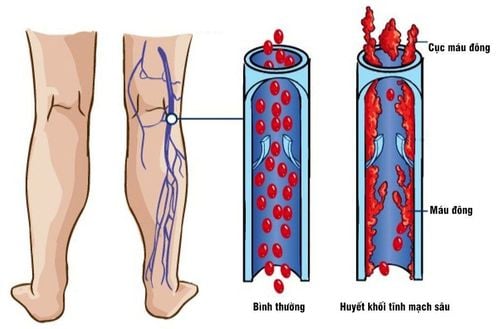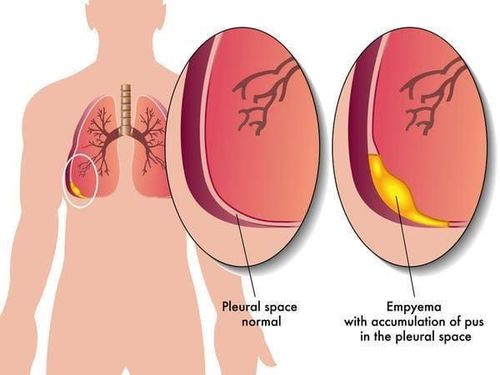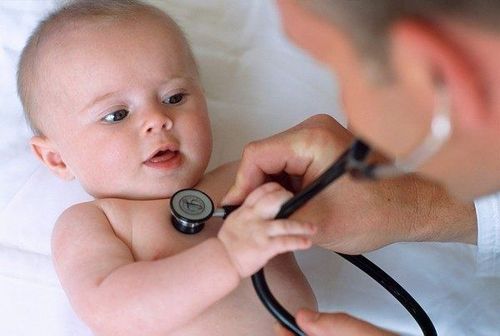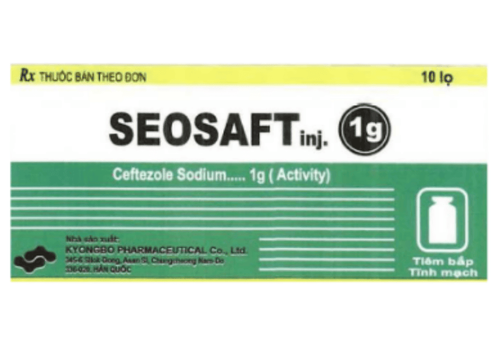This is an automatically translated article.
The article is professionally consulted by Master, Doctor Nguyen Huy Nhat - Department of Medical Examination & Internal Medicine - Vinmec Danang International General Hospital. Doctor Nguyen Huy Nhat has many years of experience in the treatment of respiratory diseases.Lung abscesses account for about 4.8% of all lung diseases. This is a pathological condition that can occur at any age, in which middle-aged people account for a higher rate. Thanks to the development of imaging tools, lung abscesses are detected earlier and the diagnosis is more certain.
1. What is a lung abscess?
A lung abscess is an infection of the lungs. The disease causes purulent swelling, necrosis of lung tissue, and the formation of cavities containing necrotic debris or fluid due to microbial contamination. The formation of multiple abscesses can lead to pneumonia or lung necrosis.2. Complications of lung abscess
Lung abscess, if not treated early or improperly treated, has the potential to cause many dangerous complications such as:Lung abscess coughing up blood: Due to the rupture of blood vessels, it is especially serious when the pressure is located. vehicle near the hilum. If not treated promptly, it can be life-threatening. Emphysema: Occurs when the abscess ruptures through the pleura. Sepsis: When bacteria in the abscess enter the bloodstream, causing septic shock and possibly death. In addition, lung abscess also causes other complications such as: pulmonary fibrosis, bronchiectasis, brain abscess ...

3. Symptoms of lung abscess
Clinical symptoms of lung abscess usually develop within weeks to many, and are divided into the following stages: Fever, chills, sweating, foul-smelling cough, and unpleasant-tasting saliva. Patients often feel fatigue, weakness, loss of appetite, and weight loss.Closed collection of pus: Dry cough, high fever, chills, can reach 39-40 degrees Celsius, fatigue, loss of appetite, weight loss. Patients often have chest pain at the site of the lesion, and may have difficulty breathing. Stomach pus: Symptoms of cough and chest pain are more severe. Coughing up a lot of thick pus. The characteristics of the pus may suggest the cause of the disease: chocolate-colored pus is often caused by amoeba, foul-smelling pus is often caused by anaerobic bacteria, and green pus is often caused by streptococcus. Body tired and sweaty. After coughing up pus, the overall condition improved, the patient felt more comfortable, could eat and drink. The pus outlet opens to the bronchi: the patient continues to cough, especially when changing positions, spitting out less pus.
4. Transmission route of lung abscess
"Is a lung abscess contagious?". The answer is that a lung abscess can be transmitted from an infected person to a healthy person if the causative agent in the abscess spreads to the outside environment. Possible routes of disease transmission:Airway - bronchi: Patients inhale bacteria into the lungs from the air, from infectious secretions in the nasopharynx, oral cavity, surgical procedures in the ear, nose and throat, foreign body in the airways, intubation, gastroesophageal reflux... Blood sugar: The pathologies of endocarditis, phlebitis, embolism, infarction and sepsis, can cause abscess in both two lungs. Adjacent line: Subdiaphragmatic abscess, amoeba liver abscess, biliary tract abscess, mediastinal abscess, esophageal abscess,... When ruptured, it can cause lung abscess.
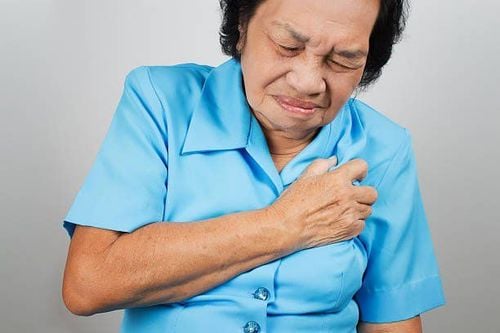
5. Subjects at risk of lung abscess
Factors that increase the risk of lung abscess include:Age: Adults over 60 years of age have a higher risk of developing the disease Alcoholism, tobacco use, drug use General exhaustion, fatigue, malnutrition Having diabetes and other chronic lung diseases such as lung tumor, lung cancer, bronchiectasis, pulmonary tuberculosis, congenital pulmonary cyst, pulmonary embolism Locality of immunodeficiency After anesthesia, intubation trachea, long-term intravenous infusion After surgery in the maxillofacial region, ENT, ear, nose and throat trauma Open chest, foreign body associated Difficulty swallowing, oropharyngeal dysfunction.
6. Diagnosis of lung abscess
6.1 Definitive diagnosis The occult stage is often difficult because of the poor, atypical symptoms, and, if possible, relies only on radiographs and ultrasonography. In the purulent stage, the diagnosis is relatively easier. In general, the diagnosis is based on: acute infectious syndrome Heavy pus (or coin-shaped phlegm), stench Cavernous syndrome, importantly, chest X-ray with water vapor level Drumstick-shaped fingers. 6.2 Diagnosing the cause Mainly sputum culture, making an antibiotic (when antibiotics are not used) if amoeba is found, blood sputum must be taken and tested immediately. Remember to ask the medical history, to find the predisposing factors for the disease. 6.3 Differential diagnosis Closed purulent stage: Pneumonia: May progress to complete healing or may develop abscessed pneumonitis. Tumors in the lung: May be benign or malignant, infectious syndrome is absent, hematologic, clinical, radiographic and bronchoscopy... help in differential diagnosis. Open purulent stage: Necrotic bronchus - lung cancer, or can also be the cause of lung abscess. In this case, the intraluminal necrosis of the tumor is irregular, there is no water vapor level, endoscopy, biopsy and foreign cells in the sputum to confirm. Superinfected bronchiectasis: In the history of persistent cough with sputum, a contrast bronchogram is diagnostic. Note that lung abscess is often a complication of bronchiectasis. Tuberculosis superinfected cave: Usually located in the apex of the lung, coughing up blood, sputum usually positive, lung film does not show water vapor level Liver abscess ruptures into the lung: The pathological process is symptomatic in the liver first, then the lungs . Ultrasound and X-ray help in diagnosis. For lung abscess, when not treated early, the patient's subjectivity or improper treatment will potentially cause a series of dangerous complications affecting the patient's health. To prevent disease, it is necessary to clean the teeth, nose and throat. Good treatment of infections of teeth - jaw - face, ears - nose - throat. Care should be taken when performing procedures in these areas to avoid tissue fragments entering the trachea. When feeding patients with a nasogastric tube, they must be closely monitored to avoid choking on food.Please dial HOTLINE for more information or register for an appointment HERE. Download MyVinmec app to make appointments faster and to manage your bookings easily.





